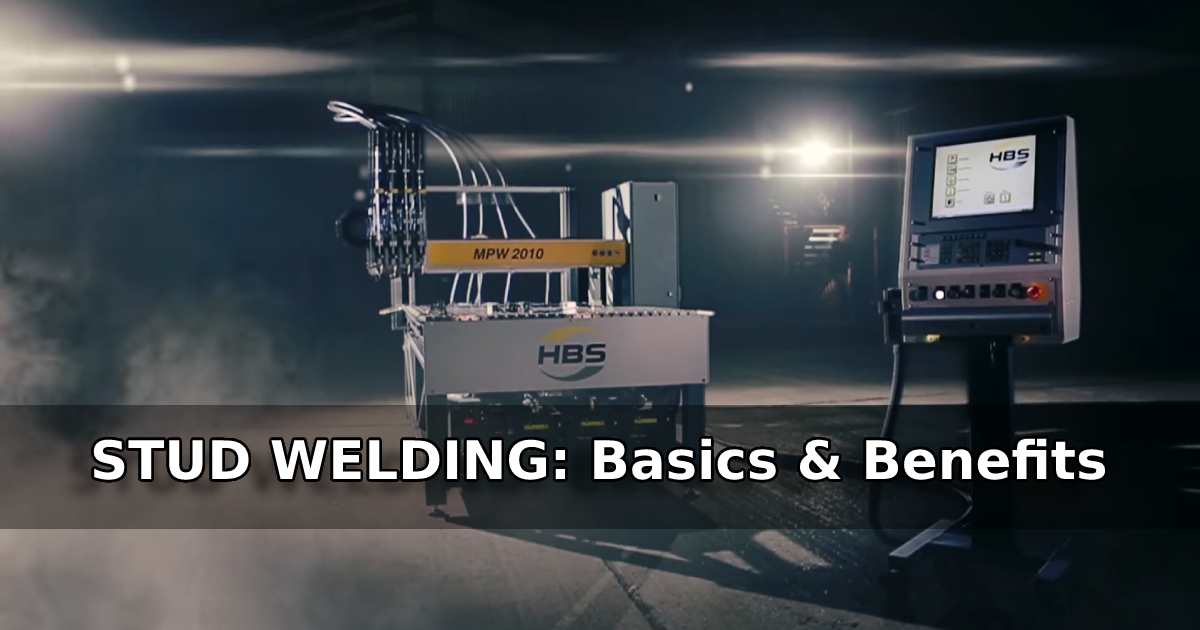Stud Welding: Basics & Benefits

In simple terms, welding is a process that uses an electric arc to join two metal parts together. A common process, but not a simple one. There are different methods, materials, and equipment that can be used for welding.
Come to stud welding, it is one of the most popular welding methods based on speed, accuracy, reliability, and visually appealing aesthetics.
Here’s everything design engineers need to know about stud welding, including the different processes, the benefits, the tools and equipment involved in all the processes.
What is Stud Welding?
Stud welding is a single-side fastening method that joins two metal parts, in that a metal sheet is known as the parent material. Parts are fused together employing a strong arc of electricity created by a positive current. The arc generates enough heat for both metals to succeed in their melting points. Once a molten pool forms, the part, and parent material are pressed together to make a secure joining and become one.
Stud welding is popular partly due to how quickly it is often administered. With the proper equipment, workers can end up a stud weld in milliseconds. The speed, however, doesn't affect the strength and reliability of the resulting joints. they're actually stronger than the parent material itself once formed and can last a lifetime.
Benefits of stud welding
Get the benefits of choosing stud welding for manufacturing and engineering operations;
- Speed
Stud welding is an extremely quick and efficient fastening technique. Fast attachments allow you to save money and time. By using stud welding machines on a large scale, users can speed up the welding process by investing in heavier-duty equipment. There are many advanced stud welding machines that can create up to eight stud welds per minute. Also, if the process can also be completely or partially automated with automation technology it will create more than 60 stud welds per minute.
Read how Industrial Automation is Important in this era
- Quality Results
The rapid nature of stud welding doesn’t equate to a loss of power or quality within the attachments made; actually , the resulting weld between stud and parent materials is stronger than the first components that have created it! Stud welding is the ideal process for load-bearing materials, as there's no weakening of the fabric as a result.
- Adaptable
Stud welding is often used with a spread of metals and stud sizes. chrome steel, low-carbon steel, aluminum, copper, and brass are often effectively stud welded if the right equipment is employed. The studs are often threaded, unthreaded, or internally threaded, and home in diameter from 1 to 25 mm, by using the right attachments and equipment stud welding machines can be adaptive.
- No holes
No holes are made within the metal sheet when the stud is fused. So there's nothing to clean or finish the metal sheet after the welding process. Therefore, any leaking or weakening of the sheet is eliminated. No leaking prevents the weld from corroding, so it remains clean and sturdy.
- Accessible
With stud welding, workers don't need to control themselves to form an efficient weld. They only need access to one side. And there's also equipment to make maneuvering even easier. For instance, thinner welding tools let welders add hard-to-reach areas.
The benefits of stud welding are endless!
If you’re looking for a quality stud welding machine rental company, then contact Yes Automation. We are the best metal fabrication rental company that supplies machinery equipment all around the globe.



